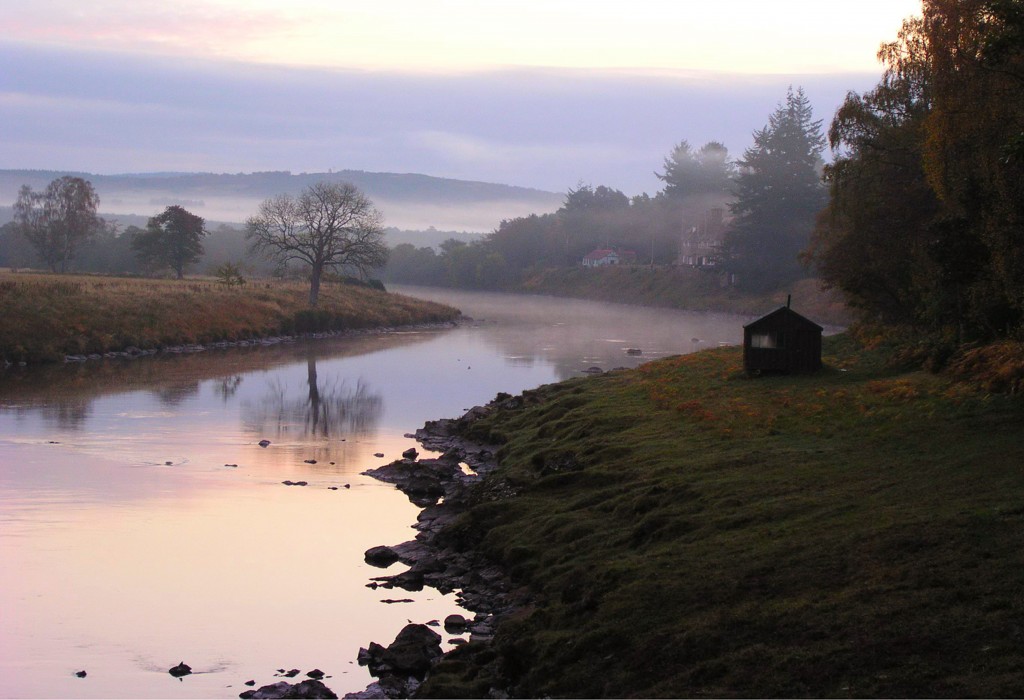Special Landscape Qualities – Visual and Sensory Qualities
General Qualities * The Mountains and Plateaux * Moorlands * Glens and Straths * Trees, Woods and Forests * Wildlife and Nature * Visual and Sensory Qualities * Culture and History * Recreation
 Visual and Sensory Qualities
Visual and Sensory Qualities
Layers of receding ridge lines
It is a landscape of receding and interlocking layers, comprising a series of gently undulating and ascending ridge lines visible when looking across to distant horizons. In hazy light these appear as hues of decreasing intensity, giving great depth to the landscape. Where ridges are not broken by human structures, the receding horizons reinforce the impression of natural landforms dominating. This quality is reflected in the logo of the Cairngorm National Park Authority.
Grand panoramas and framed views
Vast and distant panoramic views are frequent throughout the Park, made possible by open landscapes and elevated viewpoints, and visibility and colours always highly susceptible to changing weather and season. Views range from broad pastoral straths of green, improved pasture; middle-distance open, rolling hills of brown heather moor, with woodland at lower levels; and far distant, exposed, wild mountain terrain. The assemblage of landscape features is aesthetically pleasing, with views often framed by
vegetation and landform, and the eye led to an inviting arrangement of hill slopes and glens.
A landscape of many colours
All Scottish landscapes are visually reflective of seasonal and weather-related changes. Fresh, luminous spring growth and rich autumn hues are a universal and life-enriching feature of rural Scotland. The Park however possesses characteristics which make its colours distinctive and recognisable. These derive from its combination of bedrock, natural vegetation, Iochs and rivers, land management and microclimate, and include the distinctive dark green canopy and orange bark of Scots pine; the hillside patchworks of muirburn with its various subtle hues; the brilliant white snow fields and snow patches; the lochs nestled in woodland brightly reflecting the sky; the pink granite sparkling in a sharp winter sun; and the cloak of purple heather in late summer.
Dark skies
At night, even the complete absence of colour, a pitch black sky bespeckled only with the light of the stars, is a distinctive feature as dark skies become increasingly rare in Britain.
Attractive and contrasting textures
As with colour, the landscape displays a myriad of attractive and contrasting textures specific to the area. This occurs at both the small scale, for example the rough, platy bark of pine with a soft heap of wood ant nest beneath; and at the large scale, such as the rolling hills of soft heather. In between, there are gritty plateaux; sheer, hard crags; rock outcrops in soft moorland; smooth pastoral grasslands; rough rivers churning over rounded pebbles; and serene, shiny loch surfaces.
The dominance of natural sounds
The hushed ancient pine woods can evoke a cathedral-like silence, the murmur of the wind in the canopy contrasting with the stillness below. In the mountains the wind howling as it sweeps up the corries, the crash of a snow avalanche, or the peacefulness of a rare, perfectly still day can all be experienced. There is the rushing water of the linns, the wind rustling across the moors, and the bellowing of the stags during the rut. The bird calls are distinctive, whether the ptarmigan of the mountains, the red grouse of the moors, the peewits, curlews and oystercatchers of the farmland, or, in the woods, the black grouse and the capercaillie with its clicking beak. It is easy to escape man-made noise and become immersed instead in the sounds of nature.